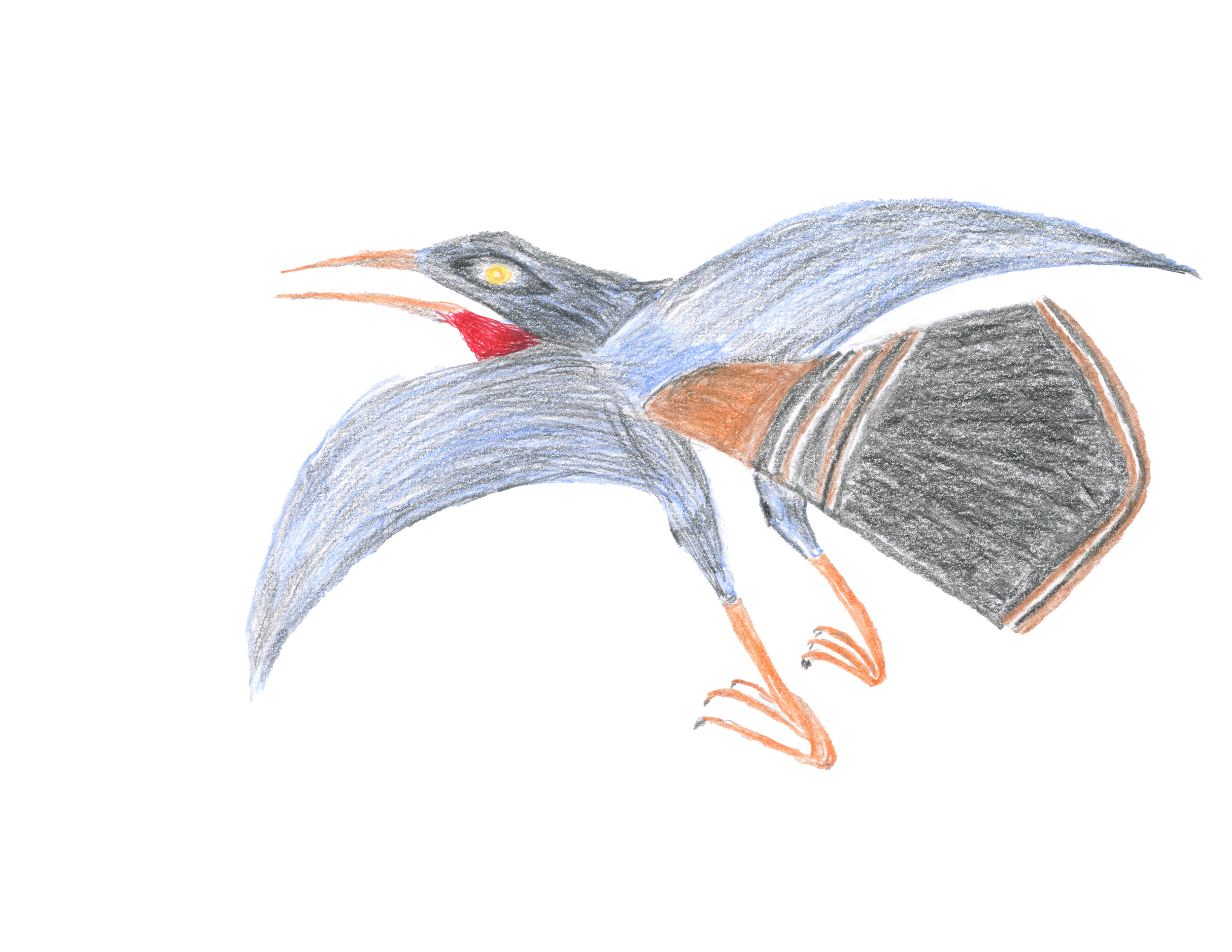Birds are really dinosaurs!
Long ago, tiny meat-eating dinosaurs slowly changed over millions of years into the birds we see today. Feathers came first, long before flight. Some dinosaurs had simple, fuzzy feathers for insulation, while others developed colorful plumes to attract mates or startle predators. Over time, feathers became more complex, eventually forming aerodynamic shapes that could help with gliding, balance, or short bursts of flight.
Certain dinosaur groups such as the theropods shared many traits with modern birds. They had light, hollow bones that made their bodies easier to lift off the ground, wishbones that strengthened the chest for wing movement, and three-fingered hands that later evolved into wings. Some even had air sacs connected to their lungs, just like birds today, which made them efficient breathers and powerful movers.
Fossil discoveries such as Archaeopteryx and Microraptor show clear in-between stages, with both reptilian features like teeth and long tails and bird-like traits like feathers and wings. These ancient creatures mark the bridge from land-bound hunters to the modern dinosaurs that soar, swim, and walk among us today.
Certain dinosaurs had light, hollow bones, wishbones, and three-fingered hands. These features are still found in modern birds. Hollow bones reduced weight without sacrificing strength, allowing for quicker movement and greater agility. The wishbone helped strengthen the chest muscles, which was important for powerful wing beats and fast running. Three-fingered hands provided flexibility for grasping, climbing, and even capturing prey.
Together, these traits made early birds and their dinosaur ancestors faster, lighter, and better suited for climbing trees, chasing prey on the ground, or eventually taking to the skies. They were physical advantages that shaped the way birds evolved and helped them survive in changing environments.
Dinosaur Bones, Bird Bones
Meet Archaeopteryx
This famous fossil had wings and feathers, but it also had sharp teeth, a long bony tail, and clawed fingers. It is one of the best examples of a transitional species, showing features from both dinosaurs and birds. Archaeopteryx lived about 150 million years ago during the Late Jurassic period and was roughly the size of a modern raven. Its feathers were well-developed for gliding or short bursts of flight, but its skeletal structure still reflected its dinosaur heritage.
The claws on its wings may have helped it climb trees or grasp prey, while its teeth were useful for catching and eating small animals. Its long tail provided balance during flight or when running along the ground. Archaeopteryx remains an important piece of evidence that modern birds are direct descendants of certain small theropod dinosaurs.
The Great Dinosaur Escape
When most dinosaurs died out 66 million years ago during the mass extinction at the end of the Cretaceous period, a few bird-like dinosaurs managed to survive. These survivors were small, adaptable, and able to live on a wide variety of foods. Over millions of years, they evolved into the thousands of bird species we see today.
Some ancient species, like Microraptor, had feathers on both their arms and legs and could glide between trees to hunt or escape predators. Others remained on the ground, relying on speed, camouflage, and sharp senses to survive. Their ability to exploit different habitats and food sources gave them a huge advantage when so many other creatures vanished.
The descendants of those survivors are still with us, from tiny hummingbirds to massive ostriches, proving that not all dinosaurs disappeared. Some simply changed and kept going.
Your Chicken Is the Cousin of the T-rex!
Scientists have discovered that chickens and other modern birds are more closely related to Tyrannosaurus rex than to any other living animal. This connection was confirmed through detailed comparisons of fossils, bone structures, and even molecular evidence from preserved proteins. The similarities in skeletal features, such as the arrangement of leg bones and the shape of the hips, point directly to a shared ancestry.
From hummingbirds darting through gardens to ostriches sprinting across open plains, every bird alive today is a living dinosaur. They are the last surviving branch of a family tree that once included some of the largest and most fearsome predators the world has ever seen. When you watch a chicken peck at the ground or flap its wings, you are looking at the descendant of mighty prehistoric giants that once ruled the Earth.
Modern dinosaurs around us
You do not have to visit a museum to see a dinosaur. Just look outside. The birds around us are living descendants of creatures that once ruled the planet. Each species carries traits that link it back to its prehistoric ancestors.
Pigeons – Fast flyers with complex feather patterns, much like their ancient relatives that used color and display to communicate or attract mates.
Ostriches and Emus – Large, flightless birds with strong, muscular legs built for speed and endurance, echoing the power of their dinosaur ancestors.
Hawks and Eagles – Equipped with sharp talons and incredible eyesight, these birds are the modern equivalents of airborne predators from the past.
Chickens and Turkeys – Descendants of ground-dwelling dinosaurs, right in our backyards, still displaying behaviors like scratching the earth for food.
Penguins – Streamlined for swimming, just as some dinosaurs adapted to life in or near the water.
Every chirp, flap, or strut is a reminder that the age of dinosaurs never truly ended. The Dinosaur Forest Project Atlanta celebrates this living connection, showing that history is not locked in stone but alive in the skies, seas, and backyards all around us.

